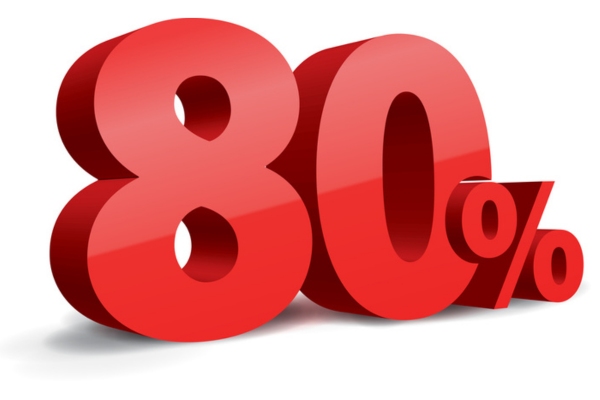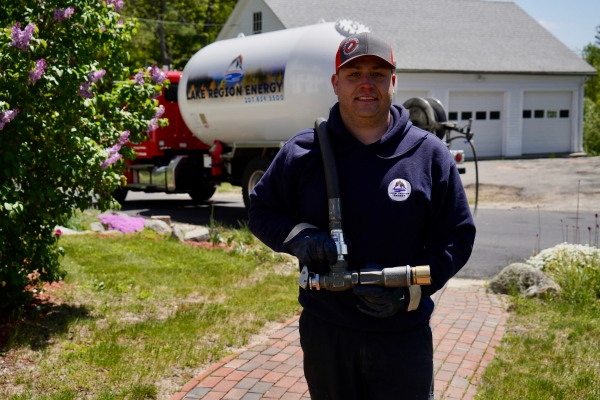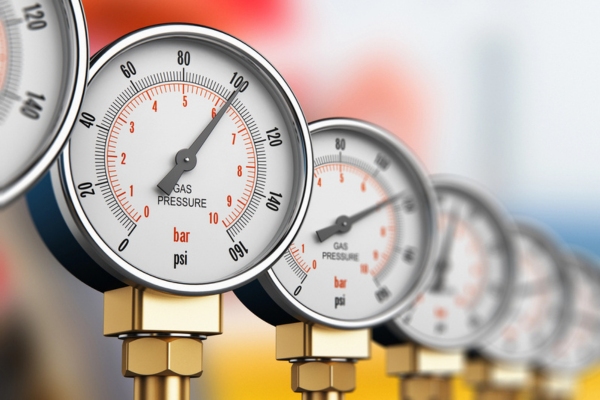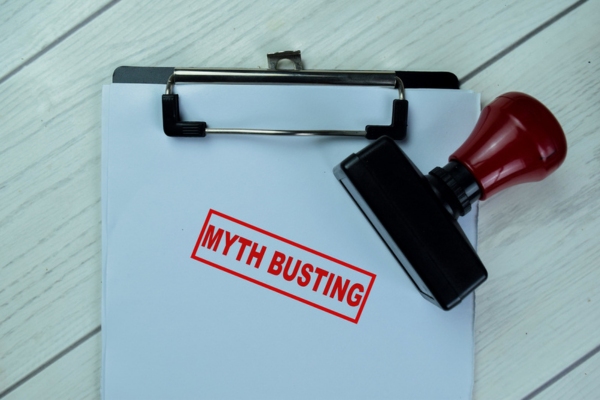Table of Contents
- What is the 80% Fill Rule & Propane Tank Levels?
- Understanding Propane Expansion
- Safety Considerations
- Operational Efficiency
- Legal and Regulatory Aspects
- How to Monitor Your Propane Tank Level
- Guidelines for Managing Propane Supply
- Common Misunderstandings About the 80% Fill Rule
- Frequently Asked Questions About Propane
- How Frequently Should I Monitor My Propane Tank Level?
- What Steps Should I Take If I Detect a Gas Odor Near My Propane Tank?
- Is It Advisable To Store Items Close To My Propane Tank?
- What Is the Proper Placement for Propane Tanks When Installed Outdoors?
- What Safety Measures Should Be Implemented for Propane Tanks in Extreme Weather?
- Conclusion
- Reach Out to Lake Region Energy for Reliable Propane Delivery Services
Propane is an essential fuel, widely used for heating homes, preparing food, and operating various household appliances. At Lake Region Energy, the 80% fill rule is a critical practice for managing propane tanks and maintaining optimal propane tank levels, enhancing efficiency and safety. Lake Region Energy firmly upholds this standard, emphasizing their dedication to customer well-being and security.
This article delves into the reasons behind the 80% fill rule and its advantages, providing Lake Region Energy customers and all propane users with a thorough understanding of why it’s crucial.
What is the 80% Fill Rule & Propane Tank Levels?

The 80% fill rule mandates that propane tanks should only be filled to 80% of their capacity. This is crucial to ensure there is space to accommodate propane’s natural expansion and contraction with varying temperatures.
By adhering to this rule, Lake Region Energy effectively manages the significant volume increase that propane undergoes when temperatures rise, preventing dangerous pressure buildups within the tank. This attentive approach helps maintain the tank’s structural integrity and safeguards the environment’s safety.
Stay Warm This Winter! Contact Lake Region Energy to secure dependable and conscientious propane services throughout the chilly season. Don’t wait, call today!
Understanding Propane Expansion
Similar to other gases, propane undergoes volume changes with temperature variations. When temperatures drop, propane contracts, occupying less space. Conversely, at higher temperatures, it expands. This characteristic is a fundamental physical property most gases share, influenced by thermodynamic principles that cause gases to expand when warmed and contract when cooled.
The 80% fill rule is intentionally crafted to handle propane’s expansive properties. By capping the fill level at 80%, the tank has adequate room to manage propane’s expansion, preventing any rise in internal pressure that might jeopardize the tank’s integrity. This safety measure guarantees that the frequent temperature fluctuations in different settings utilizing propane tanks do not create a safety hazard.
Safety Considerations
Filling a propane tank past the 80% capacity mark introduces multiple risks. Overfilled tanks lack adequate space for expansion, heightening the possibility of excessive pressure buildup. This can result in leaks or, worse, tank ruptures. These situations present direct physical threats and significantly increase the chances of fires and explosions, especially near potential ignition sources.
Propane tanks come with specialized safety components to curb overfilling. These mechanisms include the fixed liquid level gauge, which shows the maximum safe fill level, and overfill prevention devices (OPDs) that halt the filling process when the tank hits its capacity threshold.
Lake Region Energy strictly adheres to these safety protocols, guaranteeing that each tank is filled safely and efficiently. By following these measures, Lake Region Energy places utmost importance on their customers’ safety and well-being, upholding a superior standard of care and responsibility.
Seeking Dependable Propane Delivery? Contact Lake Region Energy today for continuous home comfort.
Operational Efficiency

Following the 80% fill rule allows Lake Region Energy to provide propane deliveries that are both safe and dependable, guaranteeing tanks are optimally set up to handle fluctuations in volume due to temperature changes, thus preventing any interruptions in supply. Maintaining proper fill levels also boosts the efficiency of propane-powered appliances, which perform best when fuel pressure remains within established safety parameters.
Lake Region Energy’s dedication to this rule is evident in its prompt and trustworthy delivery services. These services ensure customers receive their propane safely and on schedule, enhancing appliance performance and energy efficiency.
Keep Cozy With Confidence! Arrange your next propane delivery with us and relish the assurance of reliable service.
Legal and Regulatory Aspects
The 80% fill rule is deeply rooted in federal and state regulations, guided by standards like the National Fire Protection Association’s NFPA 58, also known as the Liquefied Petroleum Gas Code. This code stipulates precise procedures for handling, storing, and distributing propane to maintain universal safety.
Compliance with these regulations is critical to ensuring safety and avoiding legal repercussions. Non-adherence can result in significant legal and financial penalties. By strictly observing these guidelines, providers like Lake Region Energy maintain their operations’ safety, safeguarding themselves and their customers from legal risks.
How to Monitor Your Propane Tank Level

It’s crucial to routinely check your tank’s level to manage propane usage and prevent unexpected depletions efficiently.
- Visual Inspection: First, find the gauge on your propane tank, usually under the lid or on top. This gauge will display numbers from 0 to 100, representing the percentage of the tank that is full. For instance, a reading of 20% means it’s likely time to arrange for a refill.
- Calculation: To determine your current propane level, multiply the gauge’s reading by the total capacity of your tank. For instance, if your tank can hold 500 gallons and the gauge shows 40%, you have 200 gallons remaining (0.40 x 500). Consistent monitoring can help you maintain an adequate supply and avoid running low.
Guidelines for Managing Propane Supply
Monitor your propane tank levels closely to prevent sudden shortages, especially in peak usage seasons like winter. Recommended practices include weekly gauge checks and maintaining a log of these readings to better anticipate usage trends. It’s wise to arrange deliveries when your tank dips to 30% capacity. This approach ensures a safety buffer for scheduled deliveries, helping you avoid the pitfalls of a fully depleted tank.
Collaborating with Lake Region Energy streamlines your propane management through dependable monitoring and delivery solutions. Enrolling in automatic propane delivery with Lake Region Energy means your tank is continuously monitored and topped off before it drops to a critical level. This service alleviates the stress of depleting your fuel supply and enhances the efficiency and safety of your propane utilization, ensuring lasting comfort and security for your home or business.
Reliable Propane Delivery! Contact Lake Region Energy today to discover how our committed service can improve your winter heating experience.
Common Misunderstandings About the 80% Fill Rule

Several misunderstandings about the 80% fill rule for propane tanks can create confusion around propane delivery and usage. Here’s a look at some prevalent myths and the facts that debunk them:
- Myth – A tank that is only filled to 80% is being shortchanged by the provider: The 80% fill rule is a safety protocol designed to accommodate propane’s expansion with temperature fluctuations. It is not a case of underfilling; it’s a vital standard to maintain safety and effectiveness.
- Myth – The 80% rule means I will run out of propane quicker: The fill rule does not impact how quickly your propane is consumed; it merely ensures there is room for propane to expand safely. Your usage rate is dictated by how often you use your appliances, not by the tank’s capacity.
- Myth – Tanks can be filled beyond 80% during colder months without issues: Irrespective of the temperature or season, filling tanks beyond 80% can cause dangerous increases in pressure as temperatures warm, presenting severe safety hazards.
- Myth – There’s no need to check the tank level if it’s filled to 80%: Monitoring your tank level regularly is essential to prevent unexpectedly running out of propane, especially during high-demand times. The 80% rule does not eliminate the need for ongoing tank checks.
Stay Warm This Winter! Contact Lake Region Energy to talk about your propane requirements and learn how we can ensure your comfort throughout the colder months.
Frequently Asked Questions About Propane

Here are some FAQs about propane to address common concerns and offer useful information.
How Frequently Should I Monitor My Propane Tank Level?
It is advisable to inspect your propane tank level at least once a month, particularly during times of frequent use. Consistent checks help prevent sudden shortages and allow you to arrange refills promptly. Many find it beneficial to enroll in automatic propane delivery services, which eliminate the need to keep track of propane tank levels and facilitate timely scheduling of deliveries.
What Steps Should I Take If I Detect a Gas Odor Near My Propane Tank?
If you detect a gas smell, immediate action is crucial. Refrain from creating sparks or flames. Vacate the area immediately and contact your propane provider or the fire department from a safe location to report the leak.
Is It Advisable To Store Items Close To My Propane Tank?
It is essential to keep the vicinity of your propane tank free from other objects, particularly flammable materials. This practice enhances safety and ensures unobstructed access for inspections and refilling.
What Is the Proper Placement for Propane Tanks When Installed Outdoors?
Propane tanks should be set up on a non-flammable, stable surface such as concrete and located at a safe distance from the home’s main structure. They should also be positioned for easy access during filling and inspections and away from potential hazards like busy areas or drainage systems.
What Safety Measures Should Be Implemented for Propane Tanks in Extreme Weather?
In severe weather conditions, it’s crucial to protect propane tank fittings and valves from debris and ice that could impair connections or obstruct pressure relief valves. Ensuring a clear pathway to your tank is also important, as it facilitates unimpeded access for deliveries and emergency services.
Conclusion
The 80% fill rule for your propane tank levels is vital for maintaining safety, efficiency, and compliance in propane usage. This guideline allows propane tanks to accommodate necessary expansions and reduces risks. Lake Region Energy is dedicated to maintaining these standards and providing expert advice and dependable propane delivery services. If you have any questions about propane usage or need to arrange a delivery that adheres to safety and compliance standards, please contact Lake Region Energy. Ensuring your safety and satisfaction is our foremost concern.
Reach Out to Lake Region Energy for Reliable Propane Delivery Services
Lake Region Energy is committed to keeping homes and businesses in Maine and New Hampshire warm and comfortable with our trusted propane delivery services. We are focused on providing high-quality propane swiftly and effectively, ensuring you receive the necessary warmth seamlessly. Our dedication to exceptional service is demonstrated through our competitive pricing and transparent, direct approach, always prioritizing your comfort.
Selecting Lake Region Energy as your propane provider means choosing a reliable partner known for consistent, attentive service and a strong commitment to customer satisfaction. Lake Region Energy is a well-respected name in the community, ready to address all your heating requirements, ensuring your space stays warm and welcoming throughout the colder months. Get in touch with us today to begin!
For more information about our fuel deliveries and HVAC services, be sure to contact Lake Region Energy. You can click here to contact us, or you can call us at (207) 839-5500 to find out more. We offer a full line of heating and cooling repairs, maintenance services, and installations. Click the link to view our service area.

Related Articles:
- Making The Best Choice: Tips For Picking A Propane Supplier
- Mastering The Art Of Cooking With Propane: Tips And Safety Guidelines
- Propane For Standby Generator: Why It’s A Smart Choice
- The Shift Towards Propane as Homeowners’ Preferred Energy Source
- Choosing Your Propane Delivery: Automatic or Will Call?
